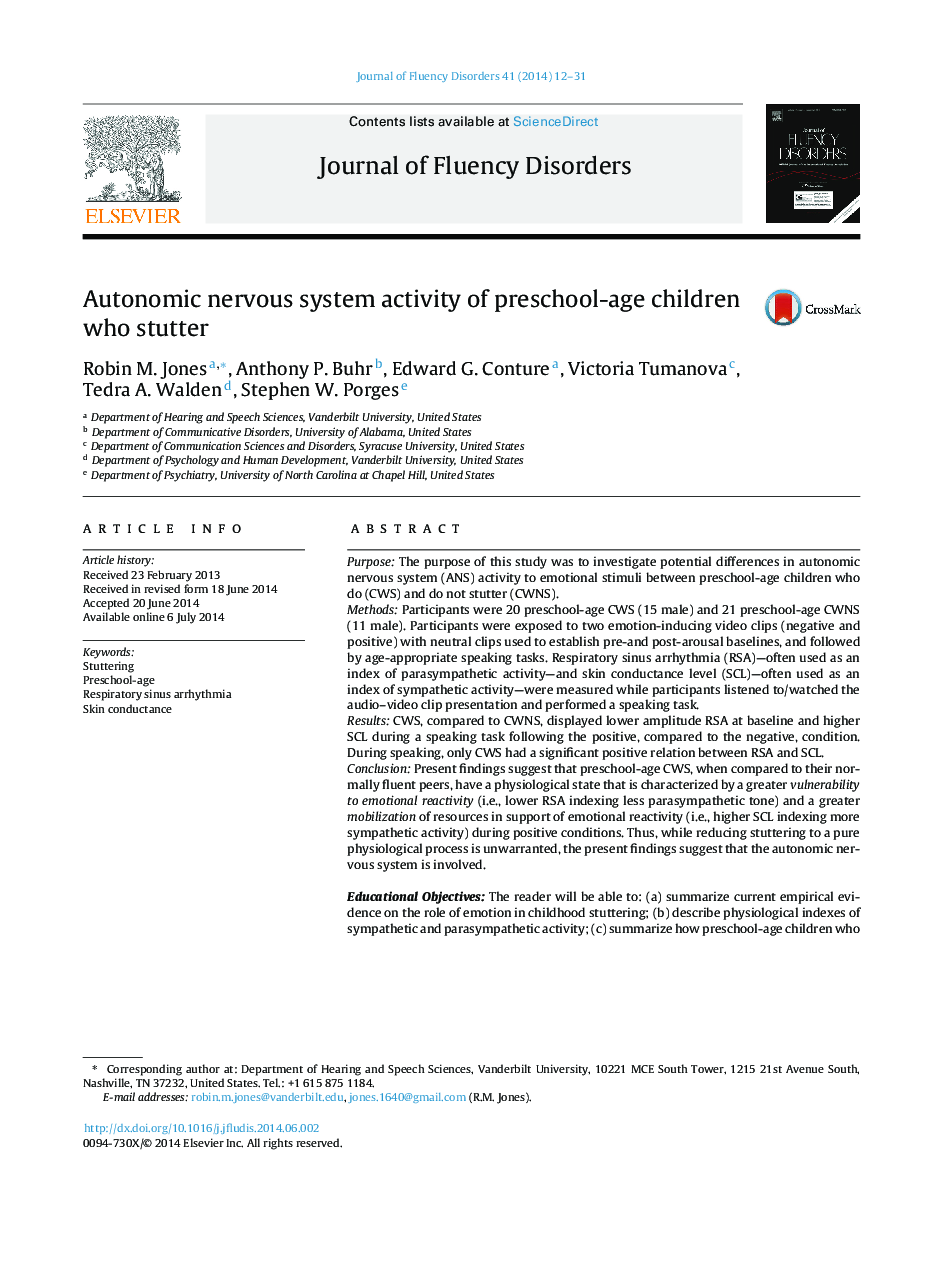| کد مقاله | کد نشریه | سال انتشار | مقاله انگلیسی | نسخه تمام متن |
|---|---|---|---|---|
| 911325 | 1473149 | 2014 | 20 صفحه PDF | دانلود رایگان |
• We assessed autonomic activity of children who do (CWS) and do not stutter (CWNS).
• CWS exhibited lower respiratory sinus arrhythmia (RSA) than CWNS at baseline.
• CWS had greater skin conductance (SC) during speech following a positive condition.
• During speech CWS exhibited a significant positive relation between RSA and SC.
• CWS had greater increase of RSA and SC during emotion conditions than CWNS.
PurposeThe purpose of this study was to investigate potential differences in autonomic nervous system (ANS) activity to emotional stimuli between preschool-age children who do (CWS) and do not stutter (CWNS).MethodsParticipants were 20 preschool-age CWS (15 male) and 21 preschool-age CWNS (11 male). Participants were exposed to two emotion-inducing video clips (negative and positive) with neutral clips used to establish pre-and post-arousal baselines, and followed by age-appropriate speaking tasks. Respiratory sinus arrhythmia (RSA)—often used as an index of parasympathetic activity—and skin conductance level (SCL)—often used as an index of sympathetic activity—were measured while participants listened to/watched the audio–video clip presentation and performed a speaking task.ResultsCWS, compared to CWNS, displayed lower amplitude RSA at baseline and higher SCL during a speaking task following the positive, compared to the negative, condition. During speaking, only CWS had a significant positive relation between RSA and SCL.ConclusionPresent findings suggest that preschool-age CWS, when compared to their normally fluent peers, have a physiological state that is characterized by a greater vulnerability to emotional reactivity (i.e., lower RSA indexing less parasympathetic tone) and a greater mobilization of resources in support of emotional reactivity (i.e., higher SCL indexing more sympathetic activity) during positive conditions. Thus, while reducing stuttering to a pure physiological process is unwarranted, the present findings suggest that the autonomic nervous system is involved.Educational Objectives: The reader will be able to: (a) summarize current empirical evidence on the role of emotion in childhood stuttering; (b) describe physiological indexes of sympathetic and parasympathetic activity; (c) summarize how preschool-age children who stutter differ from preschool-age children who do not stutter in autonomic activity; (d) discuss possible implications of current findings in relation to the development of childhood stuttering.
Journal: Journal of Fluency Disorders - Volume 41, September 2014, Pages 12–31
